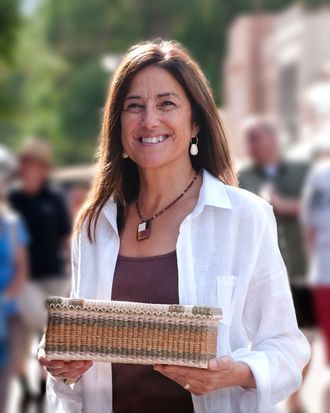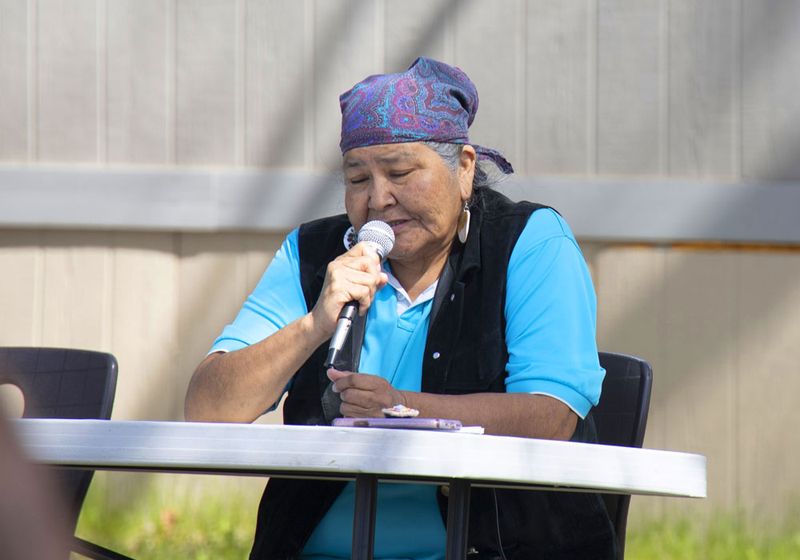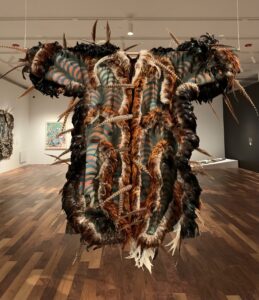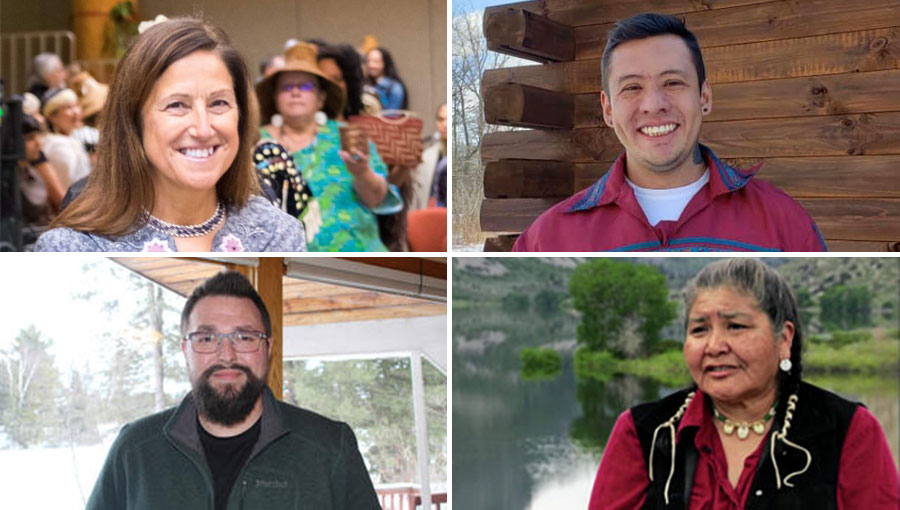In Eastern Shoshone, ny-yan-nu doe-goe, the word for the Jerusalem cricket—a large, unsightly insect known for its awful smell and a particularly painful bite—translates as “young lady’s maternal grandfather.” The burrowing owl, which nests in the homes of prairie dogs, is called din-zy hahn daysh or “prairie dog’s brother-in-law.” The loon is known as ban-daysh or “water’s brother-in-law.”
When speaking the language, it is impossible to separate objects or ideas from their relationships to the natural world. “We connect nature to our words, and we respect everything through our language,” described Reba Jo Teran, a member of the Eastern Shoshone tribe and a Luce Indigenous Knowledge Fellow.
For many Indigenous communities, speaking the language of their tribes is one of the primary ways that they express their values and strengthen their connections—to each other, to their culture, and to nature—which is why language revitalization is a critical area of focus for many Native knowledge makers.
Language as Practice
Theresa Secord, a Penobscot basketmaker and an Indigenous Knowledge Fellow, began learning Penobscot when the basketmaker she was apprenticed to told her, “You can never be truly proficient until you can weave in the language.” Thirty years later, she came back to language classes with Passamaquoddy speakers, now a more prevalent sister language. Basketry terminology is intimately associated with the practice itself. For example, “The word for ‘he/she braids’ is the same as the word for ‘he/she purrs’—latokonike,” said Secord. “It’s the sound that sweet grass makes when you’re braiding proficiently.” In her efforts to save basket weaving, she witnessed the language—especially basketry terms—falling into disuse and recognized an opportunity to perpetuate both traditions. Supported by the Indigenous Knowledge Fellowship, Secord is collaborating with an apprentice and Passamaquoddy speakers to develop workbooks that will help students learn both basketry and associated Indigenous phrases.
Intergenerational Connection
For Tuscarora citizen Montgomery (Monty) Hill, a primary goal of language revitalization is the restoration of personal connections. Like many Indigenous people of their generation, Hill’s great-grandparents learned Haudenosaunee languages from their parents but were forced to go to boarding school where the government effectively took away their ability to pass on their language to future generations. As a result, Hill’s first encounter with the Tuscarora language was not at home but as a pre-K student in class. Reviving the process of intergenerational transmission is one of the main aspects of language revitalization. “We’re trying to restore it through schools and other social institutions, and then we’ll start seeing changes. After learning it in school, I now speak Mohawk and Tuscarora with my children, so we’re bringing it back into the family.”
With the support of the Indigenous Knowledge Fellowship, Hill has challenged himself to develop a Tuscarora translation of the Great Law of Peace, the constitution of the Haudenosaunee (Iroquois) Confederacy. This centuries-old set of guiding principles describes how people should work with and treat one another, and it is traditionally shared through an oral narrative that weaves together Haudenosaunee culture, history, and values. Hill hopes to create a version that is modern and accessible to the community, a version that will reflect the growing pride and strength of their Tuscarora identity.
Strengthening Identity through Language
Dustin Burnette, an Ojibwe language teacher and Indigenous Knowledge Fellow, has also witnessed the transformative power of learning the language of one’s tribe. “Over my career, I’ve seen a massive difference in identity and confidence between students who have gone through an Ojibwe immersion program and their monolingual peers in the same community, or even in the same family. They have a more intimate relationship with what it means to be Ojibwe, through their language and the culture and ceremonies that are presented through that language.”
As a teacher in language immersion schools for more than a decade, Burnette became frustrated with the lack of development in language curriculum. He watched as schools and teachers recreated lesson plans, year after year, each organization working in its own silo, competing for the same limited grants and resources. So in 2020, Burnette started the Midwest Indigenous Immersion Network (MIIN) to facilitate collaboration and communication between eleven Ojibwe language immersion organizations that have agreed to pool and share teaching resources. His vision is for MIIN to coordinate all Ojibwe language teaching in the future, not only curating a library of standardized curricula, but also providing opportunities for mentorship and professional development.
Preservation for Future Generations
Systematizing and adapting language so that it can be used by future generations are also core elements of Reba Teran’s work. Teran, who has spent twenty years working with elders to record and document more than 20,000 Eastern Shoshone words and phrases, recognized early in her education that technology could be an incredible asset for preserving and strengthening Indigenous language practice. Today, she is digitizing a new font based on an intuitive writing system that she devised for speakers of Eastern Shoshone. Teran plans to make her font and dictionary available online where they can be accessed by teachers and speakers across the 64 Shoshone bands.
The current cohort of Indigenous Knowledge Fellows recently held their second virtual convening, facilitated by our partner, First Nations Development Institute. Being part of a cohort with the other fellows has given Teran a rare opportunity to engage with other professionals and knowledge makers. “I really enjoy talking about the language and strategies, but I’m at home by myself all the time, and I don’t get that opportunity much. Being native, we all have this camaraderie, and we all have the same goal, to keep our cultures alive.”


Sign up for updates
Explore Themes and Ideas































































